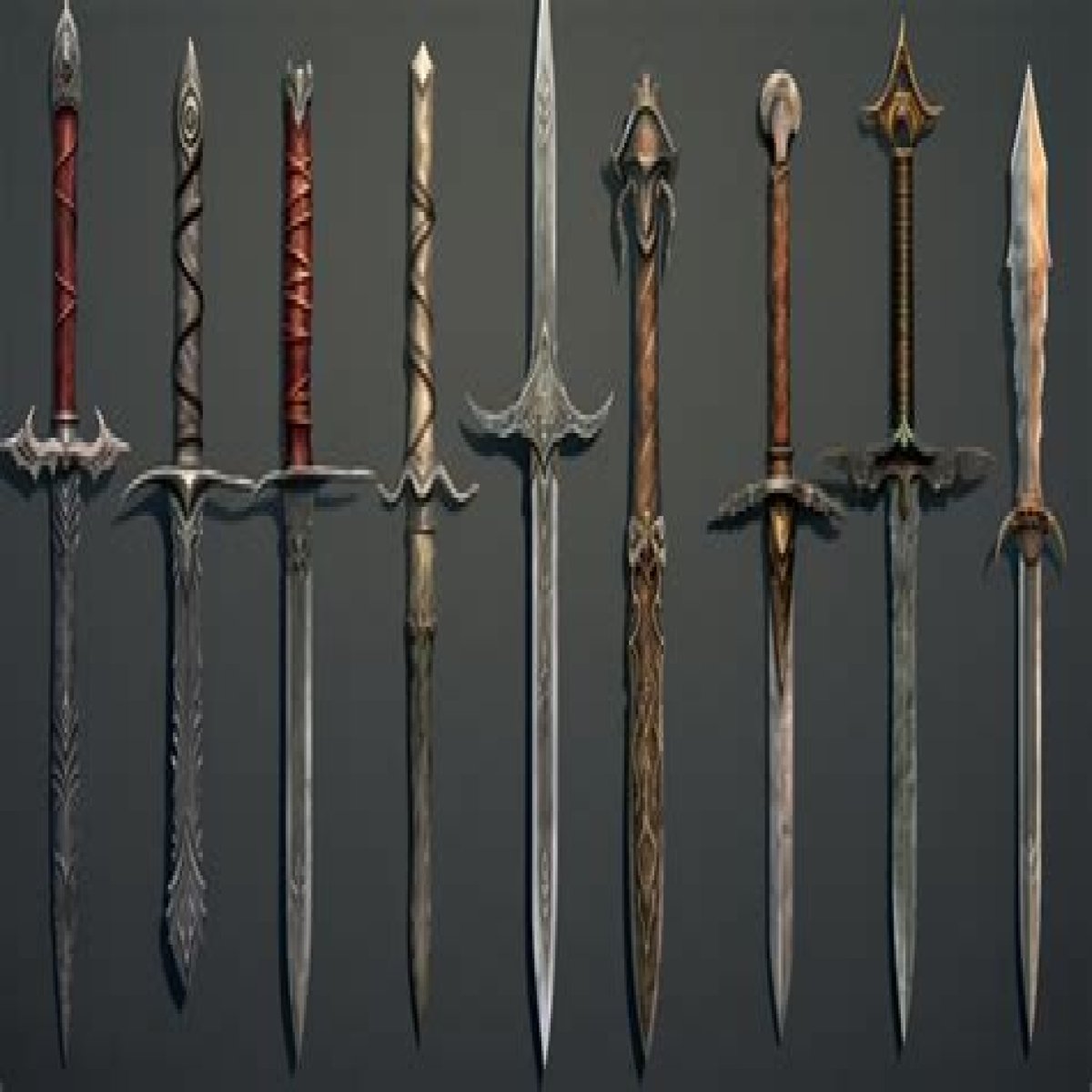The world of medieval swords is as diverse as it is fascinating. Throughout history, these blades have been more than mere weapons; they symbolize power, honor, and the art of combat. From the iconic broadswords of knights to the elegant rapiers favored by nobles, each type of sword tells a story of its time and purpose. Understanding the various types of medieval swords can provide us with insights into the culture, warfare, and craftsmanship of the Middle Ages.
As we delve into the types of medieval swords, we will explore their unique features, historical significance, and the roles they played in battles and tournaments. The craftsmanship behind these blades was often exceptional, with skilled blacksmiths creating weapons that combined both functionality and artistry. In this article, we aim to uncover the different categories of swords that defined an era and the reasons behind their evolution.
From the fearsome Viking swords to the precise and agile fencing swords, the types of medieval swords reflect the changing dynamics of warfare and personal combat. Join us on this journey through time as we dissect the various types, offering a comprehensive understanding of each sword's design and purpose. By the end, you will have a deeper appreciation for these historical weapons that shaped the course of history.
- What are the Major Types of Medieval Swords?
- 1. The Broadsword
- 2. The Longsword
- What Makes the Arming Sword Unique?
- 3. The Arming Sword
- What Role Did the Two-Handed Sword Play?
- 4. The Two-Handed Sword
- How Did the Falchion Stand Out?
- 5. The Falchion
- What About the Rapier?
- 6. The Rapier
- What Role Did the Sabre Play?
- 7. The Sabre
- Are There Any Lesser-Known Types of Medieval Swords?
- 8. The Gladius
- Conclusion: The Legacy of Medieval Swords
What are the Major Types of Medieval Swords?
Medieval swords can be broadly categorized into several types, each serving different purposes and originating from various regions. Understanding these categories helps us appreciate the intricacies of medieval combat.
1. The Broadsword
The broadsword was a powerful weapon characterized by its wide blade and double-edged design, making it a formidable choice in close combat. Primarily used by knights, its design allowed for slashing and thrusting attacks.
2. The Longsword
Longswords were typically used in the late medieval period and were favored for their versatility in combat. With a longer blade and a grip that accommodated two hands, they were effective for both offensive and defensive maneuvers.
What Makes the Arming Sword Unique?
The arming sword is often considered the quintessential knightly sword of the medieval era. Slightly shorter than the longsword, it was designed for one-handed use, allowing for greater maneuverability in battle.
3. The Arming Sword
This sword is known for its straight blade and cross-guard, making it effective for both slashing and thrusting attacks. It was typically paired with a shield, providing a balanced combat style.
What Role Did the Two-Handed Sword Play?
As battles evolved, so did the weaponry. The two-handed sword emerged as a dominant force on the battlefield, providing immense cutting power and reach.
4. The Two-Handed Sword
Also known as the greatsword, this weapon was much longer and heavier than its one-handed counterparts. Its design allowed for powerful strikes, making it ideal for breaking through armor.
How Did the Falchion Stand Out?
The falchion, with its unique shape, is another significant type of medieval sword. Its single-edged blade and curved design set it apart from other swords of the time.
5. The Falchion
This sword was designed for slashing attacks, and its curved blade made it particularly effective against armored opponents. The falchion's design reflects the practical needs of medieval warfare.
What About the Rapier?
The rapier represents a shift in sword design during the later medieval period, focusing more on thrusting than slashing.
6. The Rapier
Characterized by its slender, pointed blade, the rapier became popular among the nobility for dueling. Its design allowed for quick, precise strikes, making it a favored weapon in civil combat.
What Role Did the Sabre Play?
The sabre, often associated with cavalry, emerged as an important type of sword in medieval warfare.
7. The Sabre
This sword features a curved blade, allowing for effective slashing while on horseback. The sabre's design reflects the tactical needs of cavalry units during battles.
Are There Any Lesser-Known Types of Medieval Swords?
Indeed, several other types of medieval swords played crucial roles in specific contexts and regions.
8. The Gladius
While primarily associated with Roman warfare, the gladius influenced many medieval sword designs. Its short, double-edged blade was effective in close combat, making it a staple for foot soldiers.
Conclusion: The Legacy of Medieval Swords
The multitude of types of medieval swords serves as a testament to the ingenuity and adaptability of weaponry throughout history. Each design reflects the needs and challenges of its time, as well as the evolution of combat techniques. From the powerful broadsword to the agile rapier, these weapons influenced not only the battlefield but also the culture surrounding them. Understanding the types of medieval swords allows us to appreciate the craftsmanship and artistry involved in their creation, as well as their significant role in shaping the history of warfare.
As we reflect on the types of medieval swords, it is clear that they were not merely tools of war but symbols of honor, skill, and tradition. Their legacy continues to inspire modern swordsmanship and historical reenactments, keeping the spirit of the medieval era alive for future generations to explore.
Discovering The Origins: What Country Is Jada Pollock From?Unveiling The Nationality Of Gloria James: A Deep DiveThe Extraordinary Story Of The World's Youngest Dad
